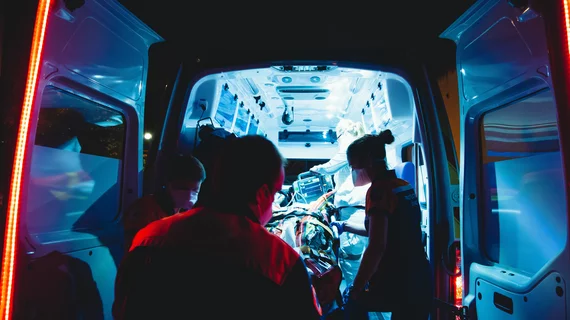Radiologists and emergency physicians agree: Imaging overuse in the ED is an ongoing problem
Both radiologists and emergency medicine physicians agree: Imaging overuse is an ongoing issue in the ED, according to new survey data published Tuesday.
The problem particularly pertains to CT overuse and is driven by several factors, experts wrote in the European Journal of Radiology [1]. These include defensive medicine/fear of malpractice, the presence of less experienced staff and easy access to imaging.
Dutch researchers reached their conclusions after interviewing 66 radiologists and 425 emergency physicians earlier this year.
“Imaging utilization in emergency departments has increased significantly in the past years and is likely to grow further,” Thomas C. Kwee, MD, PhD, with the University Medical Center Groningen in the Netherlands, and colleagues wrote May 28. “Strikingly, the increase in the number of imaging studies has outpaced the growth in the number of emergency department patients. This disproportionate growth cannot be solely attributed to increasing patient complexity. Instead, it raises concerns about potential imaging overuse.”
For the study, Kwee et al. contacted corresponding authors published across three emergency medicine-related journals between 2009 and 2023. Respondents were asked questions using a five-point scale ranging from 1 (not a problem at all/strongly disagree) to 5 (very serious problem/strongly agree).
Both radiologists and emergency physicians agreed that imaging overuse is an issue in their own EDs, with a median score of 4. CT accounted for the “vast majority” of this problem according to radiologists (85%) and emergency physicians (75%). Median ratings for “influence of pressure from patients” and “lack of time to examine patients” ranged from 3 to 4 across both physician specialties. Meanwhile, pressure from referrers to perform imaging, the use of studies to decrease turnaround time in the ED, lack of space in the ED or proper medical education, and inability to access outside exams all were cited as reasons for overuse.
Kwee and colleagues also included a space for free-form responses in the survey, which unearthed possible solutions.
“Potential interventions according to our survey results include the use of more experienced and sufficient staff in the emergency department, the provision of sufficient space in the emergency department, more proper education to students and residents aimed towards reducing overimaging, improved access to outside imaging studies, and the use of POCUS [point of care ultrasound],” the authors noted. “Several factors that contribute to overimaging—such as defensive medicine/fear of malpractice, easy access to imaging, pressure from patients and consultants to perform imaging, and the use of imaging to decrease turnaround time in the emergency department—are either difficult or impossible to readily address and require reflection and possible reform on a societal level. This was well summarized by one of the survey participants, who noted that ‘This will continue until there is a combination of tort reform, policies not based on metrics and patient satisfaction, and solutions to overcrowding in the face of reduced staffing.’”
Read much more about the results, including potential study limitations, at the link below.

